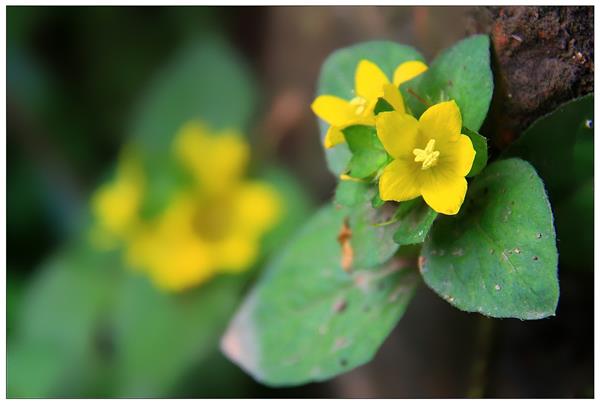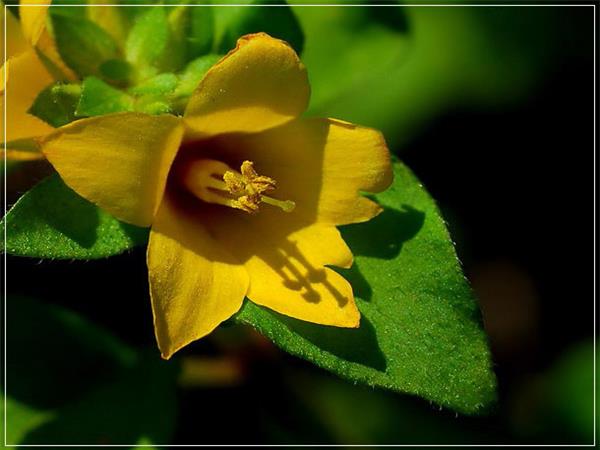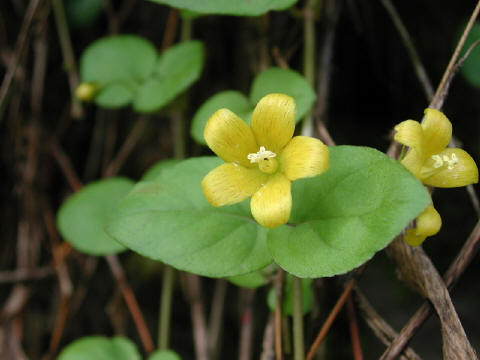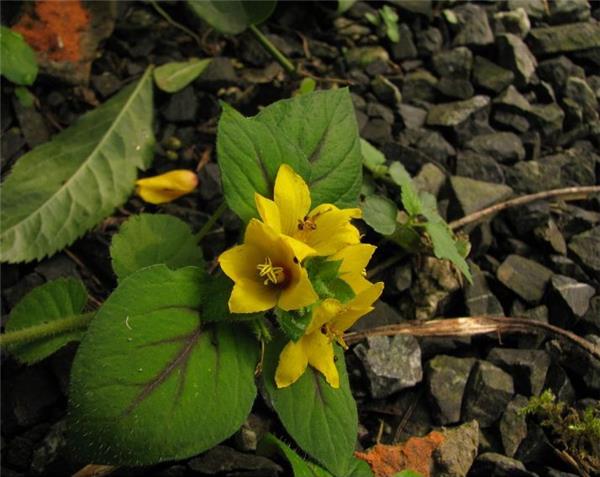The propagation mode of yellow yellow and the control methods of diseases and insect pests
Crossing Yellow is a typical landscape tree species, which belongs to Primulaceae, with golden flowers, which is very beautiful when planted in pieces.

The effect and function of Crossing Yellow
1. Passing yellow is the whole grass or whole grass with roots of Primulaceae plants. It is alienated as primrose, true golden grass, walking grass, and paving lotus. The effect of passing yellow is clearing heat and dampness, detumescence and detoxification, dispelling wind and cold. The function of passing yellow is to treat colds, coughs, headaches, diarrhea, bladder cancer and prostate cancer.
two。 Huangquan grass can be used as medicine for the treatment of urinary calculi, cholecystitis, gallstones, icteric hepatitis, edema, fall injuries, snake bites and toadstool and drug poisoning; external application to treat fire scald and suppurative inflammation.
3. Radix Rehmanniae and its alcohol extract can promote blood coagulation. Crude extract also has the effect of promoting blood coagulation, and has the effect of constricting peripheral blood vessels during frog leg perfusion. After intravenous injection of lutein, the bleeding time was shortened by 45%. Intravenous injection of rabbits can greatly shorten the blood coagulation time and increase the number of platelets. During experimental femoral artery hemorrhage in dogs, local application of yellow powder and compression has a certain hemostatic effect.

The breeding mode of Phellodendron
Hole-planting propagation: cut the golden leaf yellow plant into 7-10 cm long cuttings with 4 to 6 nodes, and then combine two or three cuttings into a bunch. if the plant is slender, 5 to 6 cuttings can be combined into a bunch. pay attention to the growth direction of the stem nodes of each cuttings. When planting, it is necessary to ensure that 1/3 of the cuttings or at least 2 stem nodes are buried in the soil, and then step on them with your feet. Iron rolling can be used to suppress the cuttings when the area is large, so that the stem nodes of the cuttings are in good contact with the soil. Note that the iron roll is not too heavy and can be slightly suppressed. The distance between planting rows is 10 mm × 10 m. If it is planted and propagated in July and August, it will cover the ground in about 40 days.
Striping propagation: the seedbed is dug into a planting ditch with a row spacing of about 15 meters, with a depth of about 2 to 3 meters. Cut the stolon into a stem segment that grows about 10 to 15 cm (the tender branch is slightly longer), then put 2 to 4 stem segments into a bunch and put it into the planting ditch, cover the soil and compact it. If you press and breed in July and August, it will cover the ground in about 50 days.
Cutting stem sowing propagation: first remove part of the leaves of the plant appropriately, and then cut it into small stem segments about 2 to 3 meters long, sow them on the wet seedbed, step on them with your feet or slightly suppress them with iron rolls. The adhesion between leaves and stem nodes often makes the small stem segments into clusters and bundles, and be careful to separate them as far as possible during sowing, so as not to affect the survival rate of reproduction. If it is sown and propagated in July and August, it will cover the ground for about a month.

Prevention and Control of Diseases and insect pests in Yellow River
Disease prevention and control: according to the experimental observation, Crossing Yellow is more likely to be infected with blight in summer when it is hot and humid, and the onset period is from June to August. This typical disease of high temperature and humidity has seriously affected the popularization of yellow road. The symptoms are brown rot of leaf, yellow rot of stem and slippery feeling. The initial susceptible site showed water-immersed dark spots, then turned into yellowish-brown patches, and finally the stem of the plant turned yellow and rotted and died. Before planting, the seedbed was disinfected with 50% desenamine 500-600 times solution. Control the amount of nitrogen fertilizer to prevent the overgrowth of yellow from forming dense clumps. Summer high temperature to ensure that the seedling bed is dry and wet moderately, do not water easily. Starting from the middle of May, 75% chlorothalonil or 80% Dysen zinc 800 to 1000 times should be sprayed regularly, especially after high temperature and rain. Timely pruning, timely branch thinning, removal of overdense stolons and diseased lower leaves. After the disease, the roots or rhizosphere soil were irrigated with 58% metalaxyl-manganese zinc solution and 80% Dysen zinc solution.
Pest control: the main pests that harm the road yellow are small tigers, snails of the same type, and so on. The small land tiger and the same type of snail make the yellow stems and leaves appear holes and lacerations, and when serious, eat up the leaves, thus affecting the ornamental effect. 50% phoxim 1000 times solution is used to control the small ground tiger, and 1 to 1.5 grams per square meter is used to control the same type snail, and the effect is better.

In general, crossing yellow is relatively easy to breed. Its pest control is mainly to rely on the correct maintenance operation to achieve, must be prevention-based, prevention and control combination, in order to effectively avoid the occurrence of its diseases and insect pests.
In order to effectively avoid the occurrence of diseases and insect pests.
Related
- Wuhan Hospital Iron Tree Blooming Result Was Instantly Frightened by the Gardener Master
- Which variety of camellia is the most fragrant and best? Which one do you like best?
- What is the small blue coat, the breeding methods and matters needing attention of the succulent plant
- Dormancy time and maintenance management of succulent plants during dormancy
- Minas succulent how to raise, Minas succulent plant pictures
- What are the varieties of winter succulent plants
- How to raise succulent plants in twelve rolls? let's take a look at some experience of breeding twelve rolls.
- Attention should be paid to water control for succulent plants during dormant period (winter and summer)
- Watering experience of twelve rolls of succulent plants
- Techniques for fertilizing succulent plants. An article will let you know how to fertilize succulent plants.



